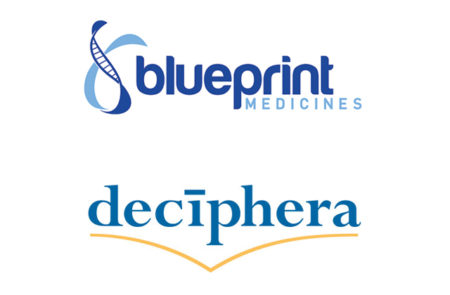 The Life Raft Group Clinic Trials Database currently lists 31 trials that are open that are or could be of interest to GIST patients. Many of the most interesting of these new drugs are in phase I clinical trials. Several new approaches are being tried including drugs that target a specific mutation or subtype, immunotherapy, drugs that bind to and/or block new parts of the KIT and/or PDGFRA proteins (the most common problems in GIST) and drugs that block KIT plus other possible alternate kinases. For this review, we have decided to focus on two that appear to be further along with exciting preliminary results and poised to move into pivotal phase III trials.
The Life Raft Group Clinic Trials Database currently lists 31 trials that are open that are or could be of interest to GIST patients. Many of the most interesting of these new drugs are in phase I clinical trials. Several new approaches are being tried including drugs that target a specific mutation or subtype, immunotherapy, drugs that bind to and/or block new parts of the KIT and/or PDGFRA proteins (the most common problems in GIST) and drugs that block KIT plus other possible alternate kinases. For this review, we have decided to focus on two that appear to be further along with exciting preliminary results and poised to move into pivotal phase III trials.
Resistance to Gleevec (imatinib) remains one of the greatest challenges in GIST; 85% or more of patients with metastatic GIST will eventually become resistant to treatment. The biggest cause of resistance is the emergence of additional mutations in KIT, called secondary mutations. These additional mutations typically occur in exons 13, 14 and 17, with less common mutations in other exons. Patients with resistance due to these secondary mutations, still have the original (primary) mutation, most commonly in KIT exon 11 or exon 9. Thus they now have dual mutations, such as a KIT exon 11/13 or KIT exon 11/17 mutations. In addition, more than one secondary mutation often emerges, often in different tumors.
Sutent (sunitinib) was the first drug to target these secondary mutations, doing a good job at inhibiting the KIT exon 13 and exon 14 mutations, however it was not effective against the KIT exon 17 mutations. Stivarga (regorafenib) was subsequently approved based largely on its ability to inhibit some of, but not all of the secondary mutations in exon 17. Although both of these drugs improved survival, almost all patients still eventually become resistant to these drugs as well. The major remaining problem was the KIT exon 17 mutations that were not inhibited, as well as some reduced activity of regorafenib on the exon 13 mutations.
Kinase inhibitors like imatinib, sunitinib and regorafenib, work best against kinases in a certain conformation called the inactive conformation.
Efforts to develop drugs that inhibit the active conformation of the kinase have been going on for quite some time. We are now starting to see more of these drugs enter clinical trials. Two of the more exciting ones for GIST are DDC-2618 by Deciphera Pharmaceuticals and BLU-285 by Blueprint Medicines.
DDC-2618
DDC-2618 is a new investigation drug in phase I clinical trials. It is recruiting for GIST in eight sites in the USA and one site in Canada. New sites in Europe will be added in 2018. Six different cohorts are planned including three specifically for GIST, allowing for patients that have received at least one prior therapy up to five prior therapies.
DDC-2618 works at a different location in the KIT protein than typical kinase inhibitors. Instead of targeting the ATP binding pocket like most kinase inhibitors, DDC-2618 binds to the switch pocket. It blocks a much wider range of mutations, including the active conformation of the kinase, such as mutations in KIT exon 17 that cause secondary resistance and PDGFRA D842V mutations.
Dr. Filip Janku, of MD Anderson Cancer Center, Houston, TX, presented updated results of the phase I trial at the 2017 ESMO meeting in September (abstract 14730). In the phase I trial, doses from 40 to 400 mg either once or twice per day were tested. The dose selected for expansion phase was 150 mg per day.
Patients in the trial had received an average of 3.4 prior lines of therapy. FDG PET scans, CT scans and plasma cell-free DNA (cfDNA) were used to evaluate response. The majority of patients with KIT mutations showed a response; 22 of 32 (69%) had a partial metabolic response (PET) by EORTC criteria and 5 of 37 achieved partial response per RECIST criteria (significant shrinkage on CT scans). Disease-control rate (DCR) for patients receiving ≥100 mg per day was 76% at 12 weeks and 57% at 24 weeks. The median PFS time had not been reached as of July 28th, 2017. There was a marked reduction of cfDNA across all mutation types, and although based on small numbers and still preliminary, use of liquid biopsies appears favorable over tissue biopsies. The most common side effects were; lipase increase, fatigue, anemia, decreased appetite and diarrhea.
These results are quite encouraging and Deciphera is planning a randomized phase 3 study in patients who have received at least three prior drugs, the Invictus trial. Participating countries will include: USA, Canada, Belgium, Finland, France, Germany, Italy, Netherlands, Poland, Spain, UK, Australia and Singapore.
BLU-285
BLU-285 is a new investigational drug currently in part 2 (dose expansion) of a phase 1 clinical trial. The phase I trial is recruiting in 5 sites in the USA, 2 sites in France and one site in Belgium, Germany, Netherlands and the United Kingdom.
Updated results of the ongoing trial were presented on November 10th, at the 2017 Connective Tissue Oncology Society (CTOS) meeting in Maui, Hawaii. Dr. Michael Heinrich of the Knight Cancer Institute, OHSU, Portland, Oregon, presented the data.
Part 1 of the phase I study is complete and the maximum tolerated dose was determined to be 400 mg per day. The dose that was recommended for phase II was 300 mg per day. Part 2 of the phase I trial is currently enrolling and is divided into two arms, PDGFRA with D842V mutations and unresectable GIST after imatinib and at least one other TKI. Fifty patients will be enrolled into the PDGFRA D842V arm. At the CTOS meeting, Blueprint announced it had recently increased the enrollment target for the third-line or later arm from 50 to 100 patients.
Data was presented at CTOS on 116 patients. In 30 patients that received doses of between 300 and 400 mg and that had KIT mutations, 20 of them (67%) had tumor shrinkage; 5 of these met RECIST 1.1 criteria for a response (16.7%) and 16 met Choi Criteria for a response (53%). For these 30 patients, the median progression-free survival (PFS) time was 11.5 months and 69% were progression free at 6 months.
Data was also presented on 31 patients with D842V mutations (primary mutations) in PDGFRA. In contrast to the data above, all dose levels were included in this report. All 31 patients achieved either a partial response (n = 30) or a complete response (n = 1) by Choi Criteria and 21 patients (68%) achieved a response by RECIST 1.1 criteria. The median PFS was not reached at the last report; however 78% of patients remained progression-free at 12 months. The most commonly reported side effects were nausea, fatigue, periorbital edema and vomiting.
Based on these encouraging results, Blueprint has added a second-line expansion cohort that is now recruiting patients, and is planning a randomized phase 3 study comparing BLU-285 to regorafenib in third-line GIST. This study is planned to begin in the first half of 2018. Patients who are interested in opportunities to participate in Blueprint’s trials can contact the company at studydirector@blueprintmedicines.com.
Although it’s difficult to make comparisons from one clinical trial to another, both DCC-2618 and BLU-285 appear to have significant clinical activity that seems to compare very favorably to the two drugs currently approved for imatinib-resistant GIST, sunitinib and regorafenib. It seems quite possible that GIST patients might have some new options in the future, and for those eligible for clinical trials, they appear to have a new option now.




